Section 1.1 Section 1.2 Section 1.3 - The Student Room
Section 1.1 Section 1.2 Section 1.3 - The Student Room
Section 1.1 Section 1.2 Section 1.3 - The Student Room
You also want an ePaper? Increase the reach of your titles
YUMPU automatically turns print PDFs into web optimized ePapers that Google loves.
SECTION 5<br />
<strong>Section</strong> 5.5, Part 2 (Addition and condensation polymers)<br />
1 a<br />
O O<br />
O O<br />
O<br />
CH 2<br />
CH 2<br />
O<br />
C<br />
CH 2<br />
C<br />
O<br />
CH 2<br />
CH 2<br />
O<br />
C<br />
CH 2<br />
C<br />
b<br />
O<br />
O<br />
O<br />
O<br />
N<br />
CH 2<br />
CH 2<br />
N<br />
C<br />
CH 2<br />
C<br />
N<br />
CH 2<br />
H H<br />
CH 2<br />
CH 2<br />
N<br />
C<br />
CH 2<br />
CH 2<br />
C<br />
H<br />
H<br />
2 a<br />
O<br />
H 2 N<br />
(CH 2 ) 5<br />
C<br />
OH<br />
b<br />
O<br />
O<br />
HO CH 2 CH 2 CH 2 OH and HO C<br />
C OH<br />
c<br />
CH 3<br />
O<br />
HO<br />
CH<br />
C<br />
OH<br />
3 Polarity increases from –CH 3<br />
to –Cl to –CN so the<br />
intermolecular attractions become stronger which leads<br />
to an increase in T g<br />
.<br />
4 a i Instantaneous dipole–induced dipole.<br />
ii Instantaneous dipole–induced dipole.<br />
Permanent dipole–permanent dipole.<br />
b (CH 2<br />
O) n<br />
would have a higher T g<br />
because of the<br />
permanent dipole–permanent dipole interactions<br />
between the chains.<br />
<strong>Section</strong> 5.6<br />
1 a Ionic lattice<br />
b i Ne monatomic<br />
ii<br />
S<br />
H H<br />
simple molecular (covalent)<br />
iii<br />
H<br />
H<br />
C<br />
H<br />
H<br />
simple molecular (covalent)<br />
iv O C O simple molecular (covalent)<br />
c i See Figure 6, page 92, Chemical Ideas.<br />
ii Covalent network or giant covalent.<br />
d <strong>The</strong> diagram should be similar to Figure 15, page 39,<br />
Chemical Ideas. <strong>The</strong>re will be 2+ charges on the<br />
positive ions as the metal is magnesium. <strong>The</strong> outer<br />
electrons, two from each magnesium atom, contribute<br />
to a ‘pool’ of electrons which move randomly through<br />
the lattice of positive ions. Each positive ion is<br />
attracted to the negatively charged delocalised<br />
electrons and vice versa.<br />
5 <strong>The</strong>re is hydrogen bonding in poly(caprolactam).<br />
In poly(caprolactone) there are only permanent<br />
dipole–permanent dipole and instantaneous<br />
dipole–induced dipole attractions.<br />
6 a Model building should show that the T m<br />
values reflect<br />
the alignment of hydrogen bonding between the<br />
polymer chains for nylon-6. <strong>The</strong>re are fewer<br />
opportunities for hydrogen bonding in nylon-11.<br />
2<br />
b Intermolecular hydrogen bonding is more extensive in<br />
nylon-6,6. <strong>The</strong> chains in nylon-6,10 can slide past one<br />
another more easily.<br />
a<br />
b<br />
c<br />
d<br />
e<br />
f<br />
g<br />
h<br />
Name State at Solubility Electrical<br />
room in water conductivity<br />
temperature<br />
sodium solid soluble conducts<br />
iodide<br />
when molten<br />
or in aqueous<br />
solution<br />
carbon gas insoluble does not conduct<br />
monoxide<br />
diamond solid insoluble does not conduct<br />
tetrachloro- liquid insoluble does not conduct<br />
methane<br />
ethanol liquid soluble does not conduct<br />
copper(II) solid soluble conducts<br />
chloride<br />
when molten<br />
or in aqueous<br />
solution<br />
vanadium solid insoluble conducts when<br />
solid or liquid<br />
poly(propene) solid insoluble does not conduct<br />
3 a Isolated atoms<br />
b Metallic; giant lattice<br />
c Covalent network (or giant covalent); giant lattice<br />
d Macromolecular; covalent molecular<br />
e Ionic; giant lattice<br />
f Simple molecular; covalent molecular<br />
4 A Macromolecular; covalent molecular<br />
B Metallic; giant lattice<br />
C Ionic; giant lattice<br />
D Metallic; giant lattice<br />
E Simple molecular; covalent molecular<br />
177



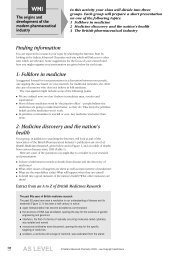
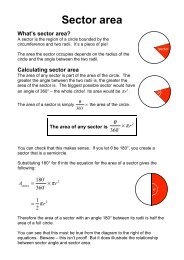
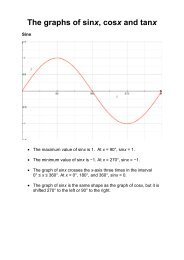
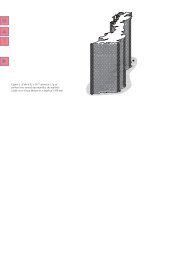

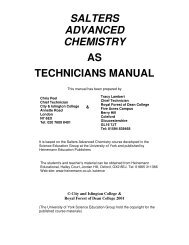


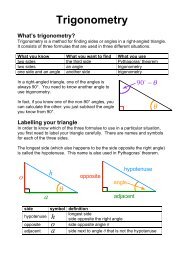
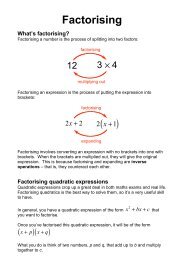
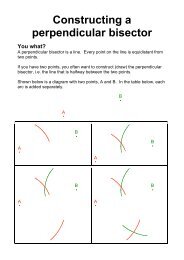

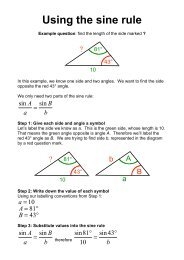
![ISI Web of Knowledge [v.4.10] - All Databases Results - Benjamin-Mills](https://img.yumpu.com/39253071/1/184x260/isi-web-of-knowledge-v410-all-databases-results-benjamin-mills.jpg?quality=85)